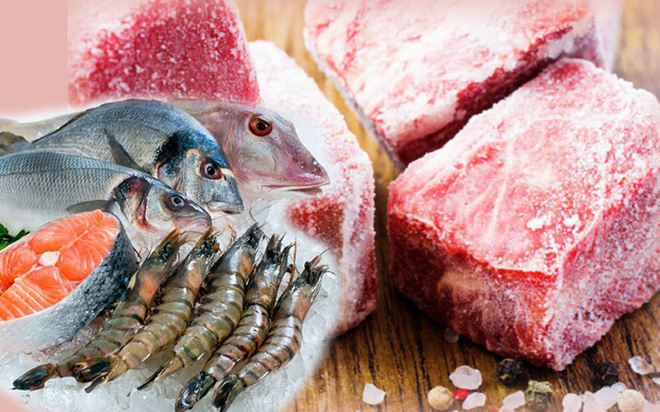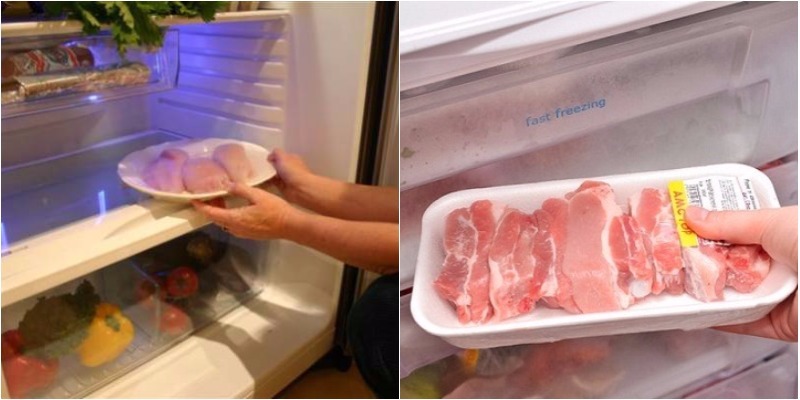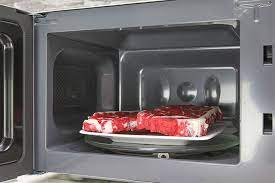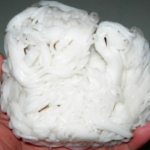During the Tet holiday, many families stock up on frozen foods to last them through the festive season. Frozen food has a longer shelf life and retains its nutritional value. However, the inconvenience of thawing frozen food before cooking cannot be overlooked. Do you know the proper way to thaw your frozen goods?

The longevity of frozen food is due to the low temperatures that freeze and inhibit most microorganisms present. As the temperature rises during thawing, these microorganisms become active again.
Except for heat-resistant or cold-tolerant microorganisms, the ideal temperature range for microbial growth and reproduction is between 16-30°C. Therefore, leaving frozen food at room temperature promotes bacterial growth. While thawing at room temperature for extended periods is not recommended due to the high risk of bacterial contamination, it can be an option during winter when room temperatures are generally lower.
You might think that hot water can kill bacteria, but it only affects the outer surface, cooking the exterior while the interior remains frozen. This method compromises the flavor and nutritional value of the food. What about cold water or adding salt? Unfortunately, these methods are ineffective and cause the meat to turn soft and white, leading to nutrient loss and microbial growth. Here’s the correct way to thaw your food:
The Right Way to Thaw: Two Techniques
Technique 1: Slow Thawing in the Fridge
Transfer frozen food from the freezer to the fridge, using thermal bags or freshness-retaining boxes. This method ensures maximum nutrient retention and minimizes bacterial growth, as fridge temperatures typically range from 0-4°C, creating an unfavorable environment for microbial growth.
However, this method can be time-consuming, so it’s best to plan ahead and move the frozen food to the fridge in the morning (or the night before) you intend to cook it, so it’s ready by the time you need it.

Technique 2: Thawing in the Microwave
Modern microwaves often have a defrost function, significantly reducing the time required compared to fridge thawing. This method also minimizes nutrient loss. However, be cautious not to set the temperature too high or leave the food in for too long, as it may start cooking. If unsure, opt for lower temperatures and shorter durations, and remember to turn the food over during the process.

Different Foods, Different Thawing Methods
Meat (with a maximum frozen storage time of 3 months), including pork, beef, chicken, duck, and fish, can be thawed in the fridge or microwave. Remember to divide them into smaller portions before freezing to expedite the thawing process.
Frozen vegetables (with a maximum frozen storage time of 1 month), such as mung beans, corn, and shredded carrots, retain their nutritional value at low temperatures. When thawing, blanch them in boiling water for 30 seconds to a minute before cooking.
For cooked foods (with a maximum frozen storage time of 2-3 months), like steamed buns, it’s best not to reheat or thaw them in the microwave, as they can dry out and affect the flavor. If you must use the microwave, sprinkle some water on the food before heating. The recommended method is to steam them slowly over low heat.
By An Nhien – Vietnamnet
The Secret to Detecting Chemically-Enhanced Noodles Lies in a Few Drops of Fish Sauce
Introducing a unique and effective way to identify clean and chemical-free rice noodles. While we often rely on visual cues to determine the quality of rice noodles, there is a clever trick that utilizes fish sauce. This simple yet ingenious method will revolutionize the way we assess the freshness and safety of our favorite delicacy.



































